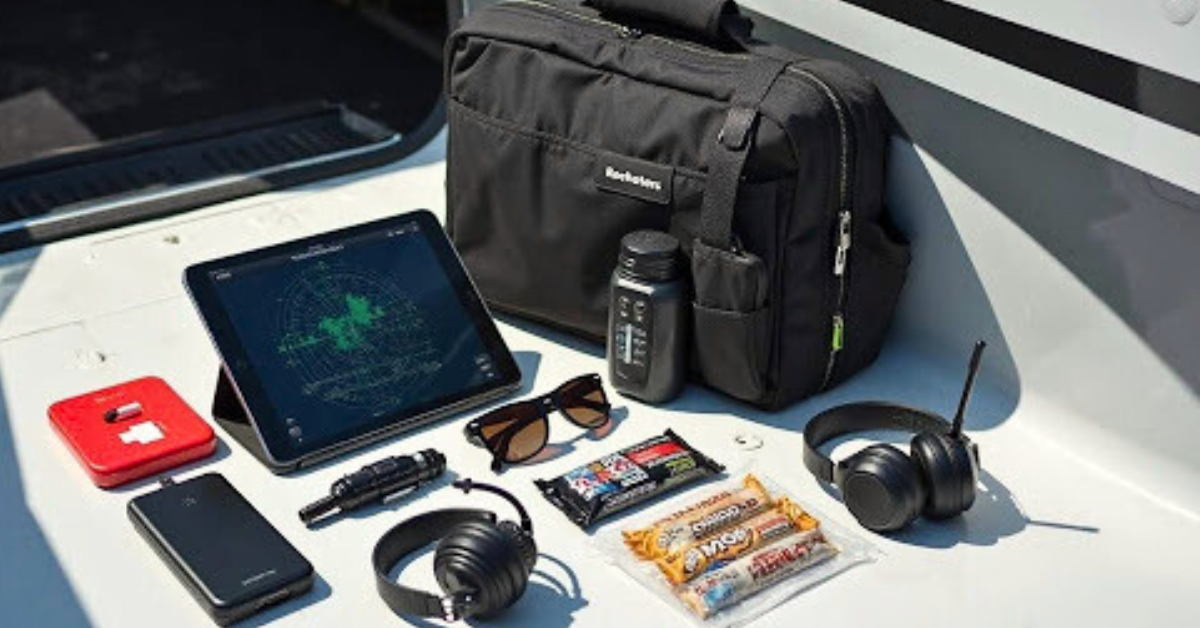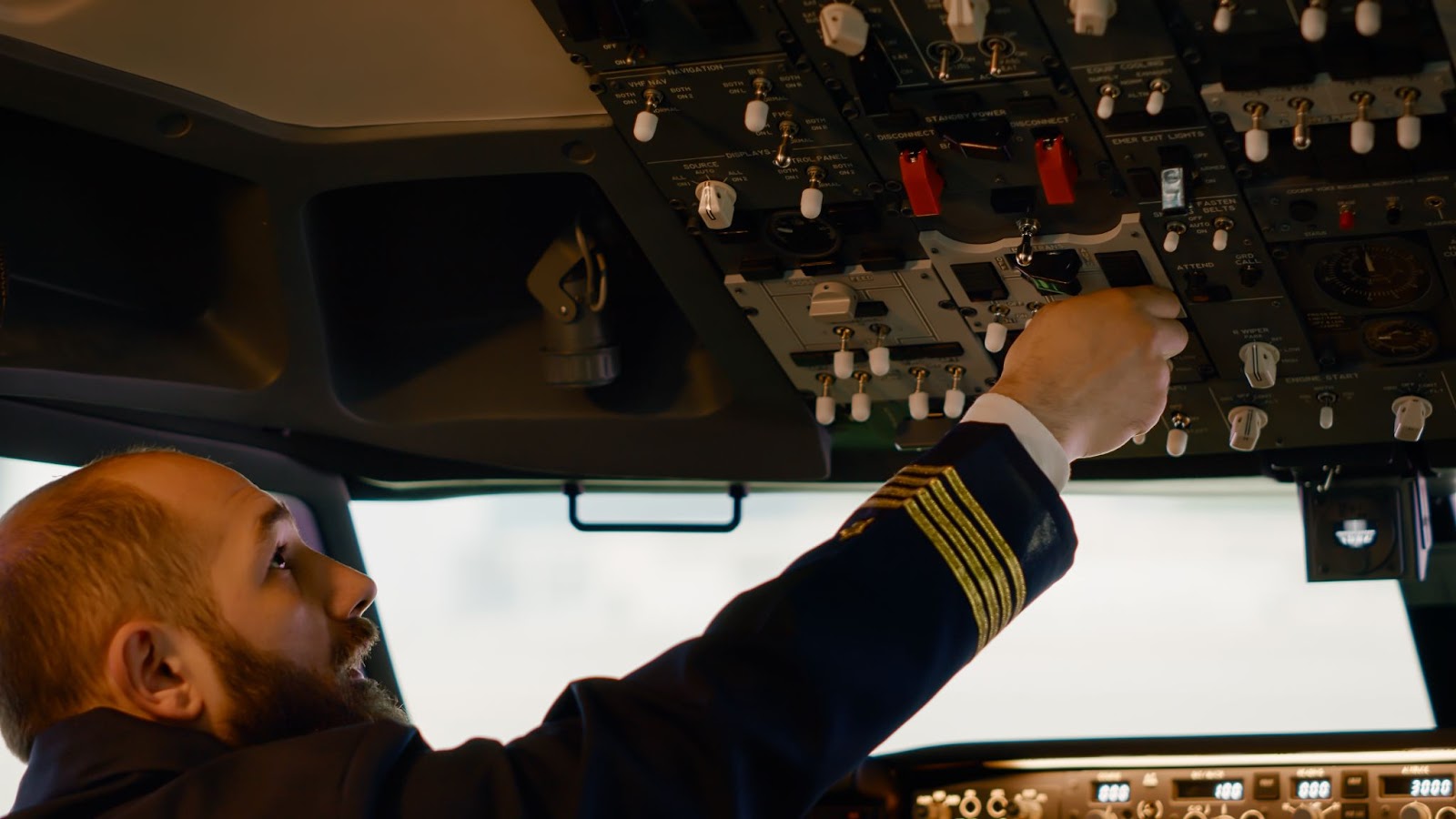
Essential Safety Gear Every Pilot Should Have Onboard

*Collaborative Post
Modern pilots enjoy major advantages thanks to electronic logging and digital document storage. Gone are the days of hauling around flight bags packed with paper charts and bulky logbooks. Today’s gear is lighter, smarter, and far more efficient.
Technology has transformed the cockpit, but having the right equipment remains essential for both safety and performance. Tools like the 11-inch iPad Pro offer the perfect mix of screen space and portability, while non-polarizing sunglasses ensure clear visibility of cockpit instruments. Many experienced pilots have learned that having the right gear on hand can make the difference between a routine flight and a stressful situation.
In this guide, we’ll go over the must-have items every pilot should carry. From key communication tools like aviation headsets and handheld radios to emergency essentials such as fuel testers, flashlights, and first aid kits, each item plays a crucial role in staying prepared and safe in the air.
Flight bag essentials for safety and organization
Your flight bag serves as a mobile command center in a pilot’s world. Modern aviation has moved toward digital solutions, but organizing your physical equipment remains basic to safety and efficiency. A well-packed flight bag will give you quick access to everything you need during critical moments in flight.
Choosing a durable and compartmentalized flight bag
The right bag forms the foundation of your pilot equipment list. Quality flight bags use high-density ballistic nylon with Duraguard® coating that repels water, stains, and abrasions. Hardware quality makes a difference – sturdy YKK® zippers can handle repeated use and won’t fail at the worst possible moment.
A bag’s organization matters just as much as its durability. Good flight bags have specific spaces for headsets, eyewear, flashlights, and electronic devices. Professional models come with built-in laptop and tablet sleeves, plus organized sections for backup batteries and chargers. This smart layout prevents distractions during flight – you’ll appreciate having “a place for everything and everything in its place” when looking for a pen or chart in turbulence.
Why a document pouch is still necessary
Document pouches remain vital even with the paperless cockpit revolution. United Airlines’ switch to iPads as electronic flight bags in 2011 replaced nearly 38 pounds of paper and saved 326,000 gallons of jet fuel. All the same, a physical document system provides significant backup.
A good document pouch shields important paperwork from damage and keeps it easy to reach. Physical sectional charts could be a great way to get backup if electronic systems fail. Many pilots keep a basic document system among their digital solutions for extra safety.
Packing your pilot license, ID, and medical certificate
Federal regulations clearly outline the documentation needed for legal flight operations. Pilots must carry their pilot certificate, photo identification, and medical certificate at minimum. These documents aren’t optional – flying without them is illegal.
A dedicated storage system in your flight bag works best. Some pilots use clear plastic pouches on neck lanyards for easy access, while others prefer special wallets or logbooks. Whatever method you choose, stay consistent – keep these credentials in the same spot to avoid last-minute searches before takeoff.
Note that your pilot certificate doesn’t include a photo, so you need government-issued photo identification too. This simple preparation keeps you ready for ramp checks or other verification needs.

Digital tools that enhance flight safety
The digital revolution has reshaped the pilot’s cockpit. Sleek electronic solutions have replaced bulky paper charts. Electronic Flight Bags (EFBs) are now vital pilot equipment that improves safety with up-to-the-minute information access and less cockpit clutter.
iPad or tablet with aviation apps
Tablets are the foundations of modern cockpit technology, and iPads lead the general aviation market. These devices turn paper-based processes into digital ones, which cuts down pilot workload and makes information more accurate. A 1.5-pound tablet can replace a typical 35-pound stack of paper charts, and this weight reduction adds up to an hour of flight time for smaller aircraft.
ForeFlight stands out as a complete aviation app that gives pilots everything they need for flight planning, weather checks, and staying clear of hazards. Its interactive graphical overlays show vital weather details that help make smart go/no-go decisions. The app also sends audio and visual alerts to keep pilots aware of their surroundings throughout the flight.
iPad kneeboard case for hands-free use
Your tablet needs proper securing for safety. Loose devices can become dangerous projectiles during turbulence or quick moves. Pilots can choose from kneeboards, yoke mounts, and window attachments – each works best in different cockpit setups.
Quality iPad kneeboards come with secure leg straps, anti-slip materials, and drop protection. Premium options like the MyGoFlight iPad Universal Kneeboard Folio C feature 360° rotating cradles and magnetic clipboards for better usability.
Portable battery pack to avoid power loss
Battery life remains the iPad’s biggest weakness in the cockpit. A tablet’s battery can run dry in about three hours of heavy use. Pilots need backup power for longer flights.
Flight Gear makes specialized aviation backup batteries in different sizes. Their 20,000mAh Giant Backup Battery charges multiple iPads at once, even while they’re in use. On top of that, these batteries include important safety features like temperature control, over-charge protection, and short-circuit protection. Smart charging detects the best current for any connected device, which delivers power efficiently without messing with aircraft radios.
Communication and visibility gear
Clear communication is the foundation of aviation safety, and proper gear selection should be at the top of any pilot’s equipment list. The right tools not only boost flight safety but also help pilots stay fresh during long trips.
Aviation headset with noise-canceling mic
Aircraft cabins create a lot of noise that can harm hearing and make communication difficult. Quality aviation headsets use either passive noise reduction (through physical sound blocking) or active noise reduction (ANR) that electronically fights ambient sounds. ANR headsets create opposite sound waves to cancel continuous engine noise, which makes communications clearer by a lot.
Bose and David Clark make TSO-certified headsets that meet FAA requirements for commercial operations. These professional-grade headsets come with uninterrupted Bluetooth connectivity for device pairing and comfortable ear seals that help prevent fatigue on long flights.
Handheld two-way radio as a backup
Backup systems are vital to flight safety, and a portable aviation radio should always be in your pilot equipment collection. These compact transceivers are a great way to get backup communication if your aircraft’s primary radio system fails.
Flight safety experts say pilots should never take off without a portable aviation radio – it’s your communication lifeline. ICOM and YAESU are 20-year old names known for making tough, reliable handheld radios built specifically for aviation.
Non-polarizing sunglasses for clear instrument reading
Pilots need non-polarized sunglasses because polarized lenses can distort digital displays and instrument panels. This happens because polarization blocks certain light angles – the same ones needed to read cockpit instruments clearly.
Quality aviation sunglasses give you 100% UV protection without polarization’s unwanted effects. They show true-to-life colors and improved depth perception – significant for tasks that need visual accuracy like flying. Gradient lenses work best for most pilots. These lenses let you read instruments easily while protecting your eyes from harmful solar radiation.
Emergency and health-related gear
Prudent pilots always keep their emergency equipment ready. Your pilot equipment list should include safety gear beyond just communication tools and digital aids.
Depending on your flight routes—especially over water—it’s essential to include flotation devices and survival equipment. For those flying coastal or overwater routes, exploring options like aviation life rafts for sale ensures you’re equipped for worst-case scenarios and compliant with FAA regulations..
Fuel tester for pre-flight checks
Fuel contamination stands out as one of aviation’s most preventable hazards. A quality fuel tester helps detect water and debris that could cause engine failure during pre-flight inspections. Water weighs more than fuel and settles at the tank’s bottom. You’ll see it as distinct droplets or a clear line across the tester in your samples.
Simple acrylic cup testers and sophisticated GATS Jars are the two common types available. GATS Jars come with built-in strainers that let you return filtered fuel to the tank. The distinctive blue tint of 100LL aviation fuel should be visible in your checks. Watch out for black specks that might show tank deterioration.
Compact flashlight or headlamp
Pilots need reliable lighting for night operations and emergencies. LED flashlights last much longer than older incandescent models. Your cockpit light should have multiple modes – white light works best for pre-flight inspections while red light helps preserve night vision.
A headlamp gives you a great hands-free option that proves invaluable during emergencies when both hands need to stay free. Advanced aviation models now offer multiple colored lights (white, red, green, blue) to handle different situations.
First aid kit for in-flight incidents
Aviation-specific first aid kits help you handle in-flight medical events effectively. Professional kits include digital blood pressure cuffs, survival aids, and wound care supplies. Detailed kits also contain tools for dental emergencies and respiratory support.
Your compact kit should have disinfectant pads, bandages, gauze, scissors, and adhesive tape. Store everything in a clearly labeled, flame-resistant case with reflective piping that shows up easily in dim light.
Snacks and water to maintain alertness
Proper hydration directly affects a pilot’s performance. Medical experts say men need 125 ounces (3.7 liters) of fluids daily, while women should get 91 ounces (2.7 liters). Dehydration can impair your decision-making with symptoms like headache, fatigue, and dizziness.
Smart snacks help keep your blood sugar stable and alertness optimal. Complex carbohydrates and protein-rich foods work better than simple sugars that lead to energy crashes. Pack nuts, dried fruit, granola bars, and beef jerky for your flights. Note that thirst signals show up after dehydration sets in, so drink water regularly throughout your flying day.
Conclusion
Flying just needs detailed preparation and proper safety equipment. This piece explores the vital gear every pilot should take into the cockpit. Safety comes from meticulous planning and the right equipment.
With detailed preparation comes peace of mind. Technology advances aviation safety continuously, yet the basics stay the same. Pilots must prepare for routine flights and unexpected emergencies. Your safety equipment shows your commitment to aircraft readiness, passenger safety, and personal peace of mind.
*This is a collaborative post. For further information please refer to my disclosure page.




